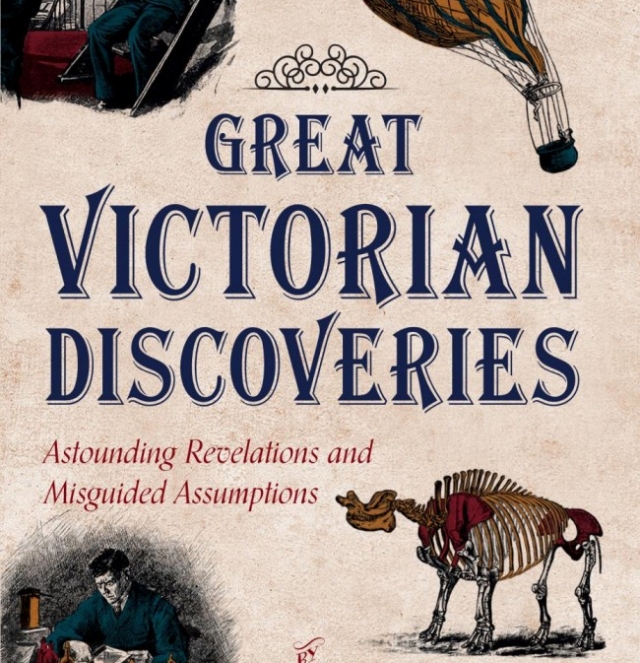Great Victorian Discoveries
Book Review

Astounding Revelations and Misguided Assumptions
Great Victorian Discoveries. Astounding Revelations and Misguided Assumptions, Caroline Rochford, Amberley, 2015, paperback, 287 pp., £9.99, ISBN 9781445645421
This sequel to the author’s well-received Great Victorian Inventions presents a cornucopia of ‘brilliant and bizarre’ examples of Victorian quests for knowledge of a world, which they dominated in so many other spheres. It encompasses the wondrous experiments and extraordinary theories of ‘the great minds of science, engineering and natural history of the Victorian Age’ and some more absurd preoccupations. Indeed, the publisher’s blurb invites readers to discover ‘exactly what was the four-footed bird?’ and find out about ‘other weird and wonderful discoveries made by Victorian explorers and scientists’ such as ‘can you really teach a dog to read’ and ‘where would you find a kangaroo crossed with a lion?’ The book exposes ‘the curious conviction that Martians were constructing waterways on Mars and that the sun was really blue’. Entering the world of botany with ‘the discovery of a plant that had the ability to uproot itself’ and hover across the landscape, along with an ornamental tree that apparently thrived on a diet of iron nails. More plausibly, it relives the moment when a German medical student accidentally splashed a liquid chemical on to his face and found that it numbed his eye, thereby discovering local anaesthetic, and explores how green Victorians tackled the threat to fossil fuels by converting straw into energy.
The context of many of these discoveries is related to an age when knowledge could be shared faster than ever before. New railways and steamships had facilitated expeditions by intrepid explorers to regions of the world hitherto unseen by Western eyes, whilst telephones enabled communication across vast distances and speedier printing presses ensured the delivery of the latest news to almost every household of the land. It concludes that ‘modern technology had kick-started an information revolution in every field of science. Drawn from editions of Cassell’s Family Magazine between 1875 and 1895, every entry is dated, with numerous contemporary illustrations. Readers across a wide age spectrum will be entertained and surprised by many of its contents with so many excursions into areas unexplored by many other surveys of Victorian culture.

